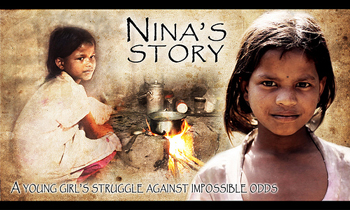
Source: Documentary-film-poster, Mark Adkins, Flickr
Documentary films are special types of videos that authors (filmmakers) use to record reality and make the audience care about the subject at hand. By using truthful accounts of actual events—sometimes in a story format—these films often take on an issue by using a point of view that supports an informational, entertainment, or persuasive purpose. Here are some examples:
- Nanook of the North about an Inuit Eskimo family trying to survive in the tundra
- Planet Earth, a documentary about the power of the natural world
- The Buena Vista Social Club about a group of Cuban master musicians making a comeback
- Baseball, a documentary about the history of our nation’s favorite pastime
- Hoop Dreams, a story about the aspirations of a group of inner city youths to play professional basketball
 Below is an excerpt about the Gettysburg Address from The Civil War, a documentary film by Ken Burns that offers a different view of that crucial time in U.S. history. Before you watch, read the left column of the chart below. While you are watching, be mindful of those film techniques and how the filmmaker uses them to influence his audience. Use your notes to write down how you would complete the chart, including your reactions to each technique used in the video. After you have finished, check your understanding to view some sample responses in a completed version of the chart.
Below is an excerpt about the Gettysburg Address from The Civil War, a documentary film by Ken Burns that offers a different view of that crucial time in U.S. history. Before you watch, read the left column of the chart below. While you are watching, be mindful of those film techniques and how the filmmaker uses them to influence his audience. Use your notes to write down how you would complete the chart, including your reactions to each technique used in the video. After you have finished, check your understanding to view some sample responses in a completed version of the chart. | Film Technique | Reaction |
|---|---|
| The filmmaker uses voiceover to state an uncommonly known fact, “The Civil War was fought in 10,000 places,” and sets the tone with the sad, quiet music in the background. | 1. |
| The first scenes include peaceful country scenes; the camera floats over them and focuses. A solo cello plays peaceful yet sad music in the background. | 2. |
| The filmmaker shows Gettysburg photographs. They are obviously old, original images, and come with thoughtful, peaceful piano music. The author also uses some old, original video clips of the wounded in the field. | 3. |
| The narrator tells the backstory of the Gettysburg Address with solo instruments playing in the background and grainy, original images of the scene. | 4. |
| The narrator speaks the Gettysburg Address over graphic, authentic pictures of dead soldiers lined up on the very battleground where Lincoln later delivers his famous speech. | 5. |
Source: The Civil War: The Gettysburg Address, Ken Burns, YouTube
Check Your Understanding
Sample Responses:
| Film Technique | Reaction |
|---|---|
| The filmmaker uses voiceover to state an uncommonly known fact, “The Civil War was fought in 10,000 places,” and sets the tone with the sad, quiet music in the background. | 1. This is a serious subject. I didn’t know there were that many battles or battles in all these places the narrator mentions. |
| The first scenes include peaceful country scenes; the camera floats over them and focuses. A solo cello plays peaceful yet sad music in the background. | 2. Now I know: This is what it was like back then. Everything looks so old and rundown. I never saw pictures like this before. I wonder what life was like back then. The sound makes me sad. |
| The filmmaker shows Gettysburg photographs. They are obviously old, original images, and come with thoughtful, peaceful piano music. The author also uses some old, original video clips of the wounded in the field. | 3. Wow, this was terrible. Can you imagine? The music alone makes me pretty quiet and thoughtful, kind of like a funeral. |
| The narrator tells the backstory of the Gettysburg Address with solo instruments playing in the background and grainy, original images of the scene. | 4. I didn’t know that his speech was not the main event. Did he really only speak for two minutes? Wow, we’ve studied this speech so much in school, yet I didn’t know it had so few words. |
| The narrator speaks the Gettysburg Address over graphic, authentic pictures of dead soldiers lined up on the very battleground where Lincoln later delivers his famous speech. | 5. The way the narrator is speaking is unusual. He speaks very slowly, emphasizing particular words. It sounds very different from a speech someone would give today. The music really helps create a thoughtful, sad mood. |